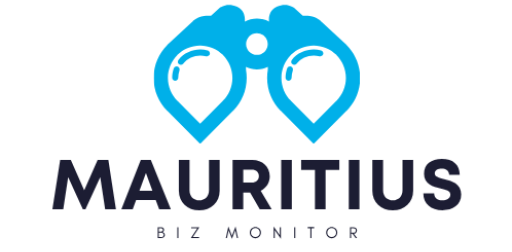Introduction
SME lending has become one of the most transformative forces in emerging markets, especially in regions like North Africa. In Egypt, one startup is turning heads by changing how small and medium-sized enterprises access finance. This article dives deep into the remarkable rise of a digital-first lending platform that’s giving SMEs unprecedented access to funding, without the bureaucratic hassle.
Let’s explore how a powerful combination of technology, strategic partnerships, and bold vision is reshaping SME financing—and what it means for the future of business in Egypt and beyond.
1. The Rise of Digital SME Lending in Egypt
In a country where traditional banking often overlooks small businesses, digital SME lending has emerged as a game-changer. Entrepreneurs previously underserved by financial institutions are now finding hope through new platforms that offer fast, fair, and flexible funding.
The digitization of lending not only simplifies the process but also opens doors for innovation. Businesses can now apply for loans, get scored, and receive funds—all online. This shift is enabling SMEs to grow faster, access working capital, and respond to market needs in real time.
2. The Vision Behind Egypt’s Boldest Fintech Move
Every startup begins with a vision, but turning that vision into reality requires both clarity and courage. The founders of Egypt’s leading digital SME lender identified a gaping hole in the market: thousands of high-potential businesses struggling to get credit.
By leveraging fintech innovation, this team set out to create a fully digital solution—from onboarding to collections. Their mission wasn’t just to lend, but to empower. Today, their platform acts as a bridge between opportunity and execution for countless small businesses across Egypt.
3. Seamless Integration with Real-World Platforms
What makes this SME lending startup truly unique is its ability to integrate directly with platforms where businesses already operate. Whether it’s an agri-food supplier, an online retailer, or a healthcare distributor, lending now happens within the ecosystem of the business itself.
This embedded financing model not only streamlines access to capital but also reduces friction. It allows SMEs to secure funding at the point of transaction—boosting speed, efficiency, and relevance in a highly competitive market.

4. Bridging the Financing Gap for SMEs
One of the most persistent challenges in the Egyptian economy has been the financing gap that limits the growth of small businesses. Traditional lenders often require collateral, complex paperwork, and lengthy approval times. In contrast, SME lending platforms remove these barriers through automation and data-driven decision-making.
By leveraging digital tools and alternative credit scoring, these platforms can evaluate risk more effectively and approve loans faster. This creates a fairer system where good business ideas aren’t held back by outdated financing rules. With SME lending, entrepreneurs can now scale their businesses without depending on personal assets or connections.
5. A Blended Approach: Equity and Debt Combined
Unlike traditional startups that rely solely on venture capital, this new wave of fintech innovation embraces a blended model. The recent $3 million raised by Egypt’s leading SME-focused platform combined both equity and debt—a strategic move that aligns with its long-term mission.
This approach allows the company to grow sustainably, offer better interest rates, and serve more clients. With SME lending as its core function, this dual-structured funding ensures that both operational expansion and loan disbursement can proceed without disruption.
6. Strategic Investors Powering the Vision
No great idea scales without support. In this case, a group of influential investors including major banks, venture capital firms, and prominent family offices came together to back this initiative. Their belief in the power of SME lending shows how critical it is for Egypt’s economic development.
These strategic partnerships do more than provide capital—they bring networks, credibility, and strategic direction. By aligning with entities that understand the local market, the platform ensures that its growth is both meaningful and impactful, giving SMEs access to reliable financial backing.
7. Empowering Diverse Sectors through Custom Lending
One of the standout aspects of modern SME lending platforms is their ability to cater to diverse industries. Whether it’s agriculture, e-commerce, manufacturing, or healthcare, each sector has its own set of financial needs and rhythms. The new generation of digital lenders understands this, offering tailored products that adapt to these unique demands.
For instance, an agri-business may need seasonal funding to stock up during harvest, while a retailer might require quick capital to meet sudden demand spikes. These lending platforms use embedded analytics to evaluate sector-specific risk, enabling them to make smarter decisions and minimize defaults. It’s not a one-size-fits-all model; it’s a highly adaptive financial engine that serves Egypt’s economic complexity with precision.
If you’re interested in exploring how digital financing is evolving across regions, check out our insights on SME digital financing trends in Mauritius.
8. Data-Driven Lending: Smarter, Faster, Safer
In today’s data-driven economy, information is the new currency. That’s especially true in SME lending. These platforms don’t just automate—they analyze. By pulling data from multiple sources such as supplier networks, payment histories, and even social behavior, they construct a full financial portrait of each business applying for a loan.
This data is then fed into AI-powered scoring engines that evaluate risk in real-time. The result? Faster approvals, better loan matching, and lower default rates. Traditional banks simply can’t match this speed or accuracy. According to a report by McKinsey & Company, digital lenders are already outperforming legacy institutions in SME risk management by up to 40%.
This tech-first model not only improves outcomes for lenders but builds trust with borrowers—who feel seen, understood, and supported rather than judged by rigid criteria.
9. Building a Scalable and Inclusive Financial Ecosystem
Scalability is not just about reaching more clients—it’s about doing so while maintaining impact and inclusion. The beauty of SME lending in digital form lies in its ability to serve businesses of all sizes and geographies. From Cairo’s buzzing tech hubs to rural supply chains, digital lenders are reaching places that banks don’t bother with.
Inclusion is not a byproduct; it’s a goal. Many of these platforms actively pursue underrepresented groups such as women entrepreneurs, youth-led startups, and informal sector players. They design user-friendly interfaces, offer multilingual support, and sometimes even include financial education modules. This is how financial systems should work—bridging gaps, not deepening them.
The digital finance wave sweeping through Egypt offers a model that other developing countries could replicate, making it not just a national win but a potential global framework for SME empowerment.
10. The Road Ahead: Challenges and Opportunities
Despite its impressive momentum, SME lending still faces challenges in Egypt. Regulatory hurdles, digital illiteracy among small business owners, and the persistent informal economy can slow progress. However, these obstacles are not insurmountable. With continued collaboration between fintech startups, government agencies, and financial institutions, the ecosystem can mature rapidly.
Future opportunities include the integration of blockchain for secure contract execution, deeper AI use for credit scoring, and regional expansion across the MENA region. Moreover, building a solid infrastructure for data privacy and customer protection will be key to sustaining trust as platforms scale up.
What’s certain is that the appetite for growth among SMEs is stronger than ever—and digital SME lending platforms are positioned to meet that demand with agility, intelligence, and purpose. As technology and regulation evolve hand in hand, the financial future of small business in Egypt looks not just promising, but transformational.
Conclusion
The rise of SME lending in Egypt is more than a fintech trend—it’s a fundamental shift in how business is funded and scaled. By breaking down barriers and building smarter systems, this new wave of digital lenders is rewriting the rules of access, trust, and inclusion.
With bold leadership, smart investment, and continuous innovation, Egypt’s SME sector is being redefined. And as these platforms grow, they’re not just supporting small business—they’re shaping the future of national economic resilience.




